Waste Clearance Whetstone: Expert Insights and Local Impact
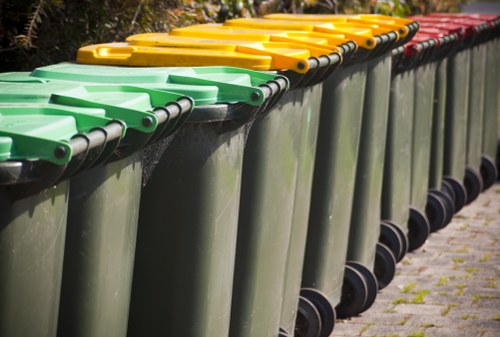
Waste clearance is a crucial part of keeping communities clean and safe, and Whetstone is no exception. This article covers everything you need to know about waste clearance in Whetstone, explaining how professionals handle waste removal, recycling, and the importance of proper disposal practices. We will explore how the efforts in waste clearance affect the community from environmental, social, and economic perspectives.
Waste Clearance Whetstone is not just about removing trash; it is a comprehensive approach that involves planning, logistics, safety, and sustainable practices. This detailed article provides expert insights and practical tips to ensure the best outcomes for every resident and business in the area.
In the following sections, you will discover the history, current practices, and future trends in waste clearance. We cover a range of topics, including the essential reasons for proper waste management, the step-by-step process, and local regulations that ensure community safety and environmental protection. By understanding these processes, residents can feel more confident in the waste clearance services available near them.
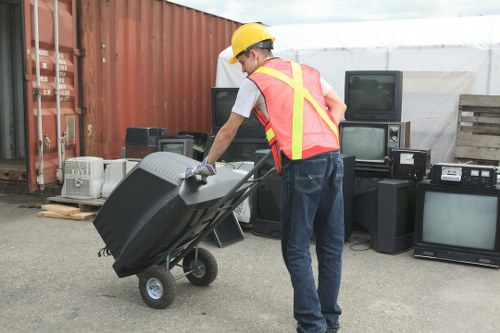
Introduction to Waste Clearance in Whetstone
Whetstone is recognized for its community spirit and commitment to a cleaner environment. As urban areas grow and communities become more diverse, the demand for effective waste clearance increases. With the variety of residential and commercial spaces in the region, local authorities, together with expert waste clearance providers, have developed specialized systems for handling different types of waste.
Importance of Proper Waste Clearance
Waste clearance is essential not only to maintain the aesthetic appeal of neighborhoods but also for protecting public health. Improper waste disposal can lead to various issues including pollution, pest infestations, and even fire hazards. Communities that invest in effective waste management see benefits such as reduced environmental contamination and improved quality of life.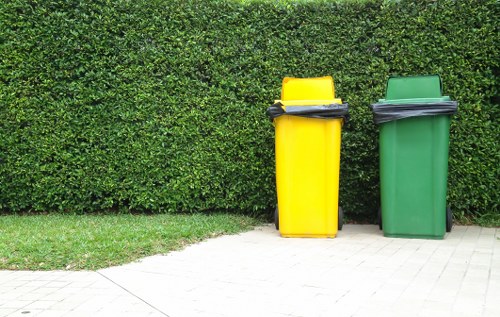
How is Waste Clearance Organized?
Many local councils and private companies in Whetstone coordinate to manage waste clearance efficiently. Their strategies include scheduled collections, emergency pickups, and recycling programs tailored to reduce landfill use. Together, these methods ensure that all waste from households, businesses, and public areas is handled systematically.Step-by-Step Processes in Waste Clearance
Understanding the routine processes can help residents grasp the necessity of each step. The process typically starts with sorting waste at the source, transferring it to designated facilities, and finally disposing or recycling it safely. This systematic approach helps identify areas of improvement and minimizes environmental risks.Community involvement is a cornerstone of environmentally responsible society. Involving local residents in waste reduction programs, recycling drives, and educational campaigns further strengthens the entire waste clearance system in Whetstone.
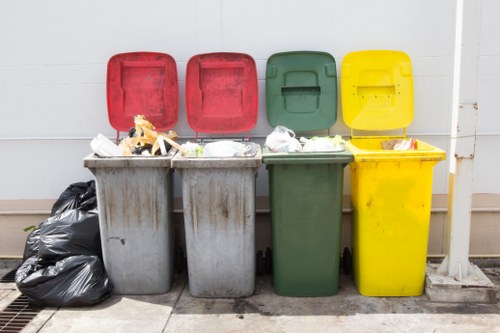
The Environmental Impact of Waste Clearance
Proper waste clearance helps safeguard the environment by reducing the introduction of pollutants into natural ecosystems. When waste is processed correctly, there are fewer harmful chemicals released into the water, air, and soil. This contributes to a healthier ecosystem, protecting both wildlife and human populations.Modern waste clearance strategies emphasize sustainability and eco-friendly methods. For instance, recycling and reusing many materials not only minimizes landfill expansion but also cuts down on the energy required for producing new products from raw materials. This creates a win-win situation that benefits both the community and the planet.
Many waste clearance experts now advocate for reducing waste at the source. This means supporting practices that limit production waste, encourage product reuse, and design products with end-of-life recycling in mind. In Whetstone, several community-led initiatives are already moving in this direction by encouraging local businesses and residents to adopt eco-friendly habits.
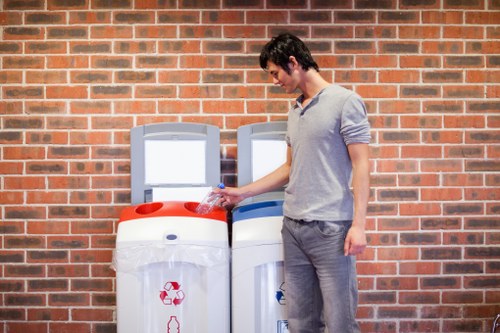
Best Practices in Waste Clearance for a Cleaner Community
Many experts suggest a series of best practices to ensure that waste clearance efforts are both efficient and sustainable. Some of these practices include:- Regular community clean-up programs to reduce accumulation of waste.
- Education on separating recyclable waste from non-recyclable materials.
- Investment in modern equipment and safety gear for waste disposal teams.
- Promoting the use of biodegradable products to decrease long-term environmental impact.
These practices are essential for protecting local ecosystems and ensuring the well-being of all community members.
Understanding the Economic Benefits of Waste Clearance
Effective waste clearance is not merely an environmental necessity, but it also makes economic sense. Properly managed waste disposal can lead to job creation, reduced municipal expenses, and even stimulate local recycling industries. For Whetstone, an efficient waste clearance system helps keep communities attractive and can draw investment into local infrastructure projects.From everyday collection to more complex recycling operations, every step in the waste clearance process contributes to the local economy. Waste clearance companies create employment opportunities and often collaborate with local businesses for various services. This ensures a stable and productive economic cycle which in turn supports the community’s growth.
Moreover, effective waste clearance reduces the cost burden on local governments that might otherwise have to manage the negative impacts of unmanaged waste such as increased public health spending and cleanup costs. These financial savings can be reinvested into community projects and other essential services.
Community Engagement and Awareness
For waste clearance to work successfully, it is important that every resident understands their role in the process. Community engagement initiatives are a critical part of the overall waste management strategy in Whetstone. These initiatives include education programs in schools, information drives in public spaces, and community workshops that explain procedures for waste segregation and disposal.Empathy in environmental management means recognizing that every member of the community contributes to the success of waste clearance. By participating actively, residents help create a cleaner, safer neighborhood, which benefits everyone. Local councils often partner with schools and community centers to deliver these messages effectively.
In addition, local businesses are also encouraged to participate by adopting best practices in waste management. This includes providing clear instructions for waste separation, implementing recycling bins on their premises, and supporting local environmental initiatives. In time, these collaborative efforts lead to measurable improvements in waste reduction and overall community aesthetics.
Challenges in the Waste Clearance Process
While waste clearance is essential, it is not without its challenges. Some of the common obstacles include illegal dumping, improper waste segregation, and the difficulty of processing certain types of waste like electronics or hazardous materials. Addressing these challenges requires constant vigilance and innovative solutions from both public and private entities.Another challenge is maintaining effective communication between waste management authorities and the community. Clear communication channels are vital for reporting issues and ensuring that prompt action is taken when problems arise. Regular updates, online platforms, and community meetings help keep everyone informed about new procedures or changes in waste management protocols.
Despite these challenges, ongoing improvements in technology and stricter regulations continue to bolster waste clearance efforts. Advances such as smart waste bins, improved recycling techniques, and better transportation logistics are gradually overcoming many of the traditional hurdles faced by waste clearance services.
Utilizing Technology in Waste Clearance
Technology plays a critical role in modern waste clearance. In Whetstone, smart waste bins equipped with sensors are being trialed to monitor fill levels and optimize collection routes. These innovations ensure that waste is cleared regularly and efficiently, reducing overflow and minimizing environmental contamination.Digital platforms also facilitate better communication between the community and waste management authorities. Mobile apps and websites allow residents to report issues, schedule pickups, and learn about local recycling events. This method of engagement is proving particularly effective in urban areas where time and efficiency are of the essence.
Investments in waste management technology not only improve efficiency but also help reduce the energy footprint of waste clearance operations. By streamlining processes, these tools contribute to a more sustainable system that benefits both the environment and local communities.
Sustainability Initiatives and Future Plans
Waste clearance in Whetstone is set to evolve with a greater emphasis on sustainability. Many local authorities are pushing for more green initiatives such as zero-waste policies, composting programs, and enhanced recycling efforts that aim to turn organic waste into energy or fertilizer.This shift towards sustainability is driven by the dual need to protect the environment and support the local economy. By reducing landfill use and promoting the reuse of materials, waste clearance services are aligning with the global trends of long-term ecological responsibility and economic resilience.
The future of waste clearance in Whetstone includes plans to incorporate renewable energy sources into waste treatment processes. The potential to harness energy from waste, through methods like anaerobic digestion or incineration with energy recovery, represents a promising area of development in waste management technology. These advancements are expected to lower both the environmental impact and operational costs significantly.
Local Relevance: Nearby Areas and Whetstone
Whetstone is well-connected to several nearby areas that benefit from integrated waste clearance initiatives. Understanding the local geography and the relationship between neighboring regions can help explain how waste clearance strategies are synchronized across communities.Here are some of the closest areas to Whetstone that share interests in waste management and environmental sustainability:
- Leicester - A major city known for its vibrant cultural scene and busy urban environment. Its waste management practices often set a benchmark in the area.
- Loughborough - Located nearby, it is renowned for its academic environment and innovative approaches to recycling and waste minimization.
- Melton Mowbray - Famous for its culinary heritage, this town also works hard to implement efficient waste clearance services for both businesses and residents.
- Derby - A larger urban area with advanced waste processing technology and a strong commitment to eco-friendly policies.
- Nottingham - This bustling city leads with progressive recycling initiatives and community-led environmental programs.
- Newark - A smaller community that synchronizes its waste clearance practices with neighbouring cities to ensure regional cleanliness.
- Grantham - Known for its close-knit community and regular clean-up events, contributing significantly to local environmental efforts.
- Kettering - With an emphasis on sustainable living, this area invests in modern waste clearance infrastructure to reduce ecological impact.
- Corby - A town that continuously upgrades its waste management systems to keep up with growing needs and environmental standards.
- Lutterworth - A community focused on integrating traditional waste clearance methods with innovative, sustainable practices.
- Rothley - A small village that benefits from the spillover of waste management strategies from larger nearby towns.
- Hinckley - Strategic in its planning, Hinckley often collaborates with neighboring areas for improved recycling and waste reduction.
- Narborough - Emphasizes green initiatives that align well with broader regional waste clearance projects.
- Syston - A key locale with strong community engagement in environmental initiatives and local waste clearance efforts.
- Birstall - Known for its proactive waste management strategies and participation in sustainable community programs.
Each of these areas brings its own unique features and challenges to the table, yet together they contribute to a regional effort for cleaner and healthier communities. The proximity and cooperative measures among these areas underline the importance of coordinated waste clearance strategies for regional safety and environmental sustainability.
How Residents Can Contribute
Residents play a fundamental role in supporting waste clearance efforts in Whetstone. By following a few simple steps, individuals can ensure that their neighborhoods remain attractive and free from hazards. One of the primary ways to contribute is by sorting waste properly.Proper segregation of recyclable materials like paper, plastic, and glass can significantly reduce the load on waste processing facilities. When residents actively participate in recycling programs, they help extend the life of recycling plants and reduce the energy used in producing new materials.
Another important action item is reducing the overall amount of waste produced. This can be achieved through practices such as purchasing products with less packaging, reusing items where possible, and composting organic waste. Each small act contributes to a larger, collective impact that supports the entire system of waste management.
Tips and Strategies for Enhancing Residential Participation
For residents eager to participate in waste clearance initiatives, here are some useful strategies:- Stay informed: Regularly check your local council's website for updates on waste collection schedules, changes in procedures, or new recycling programs.
- Organize community clean-ups: Volunteering or organizing neighborhood clean-up days can bring residents together and address local issues directly.
- Educate neighbors: Share reliable information about waste sorting and recycling practices to cultivate a community-wide effort.
- Minimize waste: Practice sustainable shopping habits, and opt for reusable products whenever possible.
Community involvement ensures that waste clearance is not just a government or contractor responsibility but a shared community value. Initiatives like these often lead to reduced waste in local landfills and foster a sense of pride among residents.
When every individual takes responsibility, the cumulative effect is a cleaner environment and a healthier society—a goal that lies at the heart of waste clearance in Whetstone.
The Role of Waste Clearance Companies
Many specialized waste clearance companies operate in and around Whetstone, bringing expertise and advanced technology to the table. These companies are dedicated to handling various types of waste—ranging from domestic refuse to commercial and hazardous waste—in a safe and efficient manner.These companies follow strict regulations and guidelines established by local authorities. They invest in state-of-the-art equipment and protective gear to ensure that waste handling processes are both safe for employees and environmentally sound. Their dedication to excellence helps build trust among community members.
Partnerships between municipalities and private companies ensure that waste clearance services are well-coordinated and responsive to local needs. These partnerships also facilitate the sharing of innovative ideas and best practices that benefit the entire community.
Legal and Regulatory Framework
Waste clearance is governed by a robust set of legal and regulatory requirements that aim to protect public health and the environment. Local authorities in Whetstone enforce these rules strictly to ensure that waste disposal is conducted in a safe and efficient manner.Key legislation covers areas such as recycling standards, landfill management, and the disposal of hazardous materials. These laws are designed not only to hold waste clearance providers accountable but also to offer guidance on how best to manage waste at every stage of its life cycle.
The regulatory framework also includes significant fines and penalties for non-compliance, ensuring that all stakeholders—from residential users to large businesses—adhere to the file guidelines. This legal structure is crucial for maintaining high standards in waste clearance across Whetstone and its neighboring areas.
Common Misconceptions About Waste Clearance
In any technical field, there tend to be myths and misconceptions that can confuse residents. One common misconception is that waste clearance simply involves picking up trash. In reality, the process is multistep, which involves sorting, transportation, and processing of different waste streams. Educating the public about these steps can help foster more support for the initiatives in place.Another myth is that recycling and waste clearance are overly complicated processes. With modern techniques and technology, many of these procedures have been streamlined to ensure easy participation by all community members. Efforts are made to create user-friendly systems that demystify the process and encourage responsible behavior.
Addressing these myths is important for building trust and ensuring that residents engage willingly with the waste clearance program. Accurate information enables people to appreciate the complexities involved while also seeing how simple actions on their part can make a big difference.
FAQs
Q: What is Waste Clearance Whetstone all about?
A: It encompasses all methods and practices used to remove, sort, and dispose of waste in the Whetstone area, ensuring a cleaner and safer environment.
Q: How can I participate in the waste management programs?
A: Residents can participate by segregating waste, recycling, joining community clean-ups, and staying informed through local government updates.
Q: What are some sustainable practices promoted in Whetstone?
A: Practices include waste segregation, recycling, proper disposal of hazardous materials, and using biodegradable and reusable products.
Q: How do waste clearance companies contribute to the community?
A: They provide expertise in handling all types of waste safely and efficiently, complying with regulatory guidelines, and supporting local economic growth through job creation and technology investments.
Q: Are there any local initiatives for reducing landfill use?
A: Yes, local councils and community organizations are actively promoting composting, recycling programs, and waste reduction campaigns to reduce landfill dependency.
In conclusion, Waste Clearance in Whetstone is a multifaceted and essential service that plays a critical role in maintaining community health and environmental sustainability. By employing advanced technology, adhering to strict regulations, and fostering a culture of community involvement, waste clearance initiatives help create a cleaner, safer, and more economically vibrant environment.
The collaborative efforts of local councils, dedicated waste clearance companies, and active citizen participation ensure that Whetstone remains a model community when it comes to waste management. As local authorities continue to improve and innovate on traditional methods, residents can look forward to a future where waste is managed in ways that benefit both the immediate area and the global environment.
From environmental protection to economic opportunities, waste clearance in Whetstone is evolving to meet the challenges of modern urban living. Whether you are a resident, business owner, or simply an environmental enthusiast, understanding these processes and actively participating in them is key to achieving long-term community well-being and environmental sustainability.
